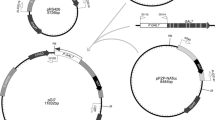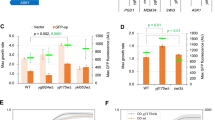Abstract
Tom1p is a 3268-amino acid protein with extensive homology to the hect-domain class of E3 ubiquitin ligases. Disruption of the TOM1 gene results in temperature sensitivity for growth. Genes encoding the peptidyl proline isomerases Fpr3p and Fpr4p, when present on multicopy plasmids, will suppress this temperature-sensitive growth phenotype. FPR3 can also suppress the mating defect seen in tom1 strains. Suppression is specific for disruption of TOM1, since FPR3 does not restore wild-type growth to strains lacking the E2 ubiquitin-conjugating enzyme Rad6p or the transcriptional regulator Ngg1p. Interestingly, the peptidyl proline isomerase domains of Fpr3p and Fpr4p are not required for suppression; rather the essential sequences include about 170 highly conserved residues at the proteins' N-termini. Previously we found that Tom1p plays a role in gene regulation. Since overexpression of FPR4 does not suppress the reduced expression of the ARG1 promoter found in tom1 deletion strains, Tom1p probably has one or more functions beyond its involvement in gene expression.
Similar content being viewed by others
Author information
Authors and Affiliations
Additional information
Received: 18 December 1999 / Accepted: 21 January 2000
Rights and permissions
About this article
Cite this article
Davey, M., Hannam, C., Wong, C. et al. The yeast peptidyl proline isomerases FPR3 and FPR4, in high copy numbers, suppress defects resulting from the absence of the E3 ubiquitin ligase TOM1. Mol Gen Genet 263, 520–526 (2000). https://doi.org/10.1007/s004380051197
Issue Date:
DOI: https://doi.org/10.1007/s004380051197




